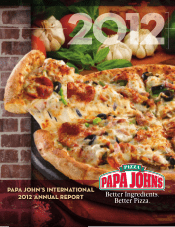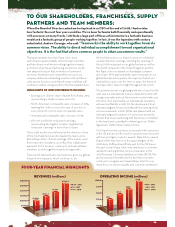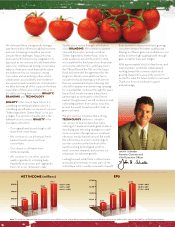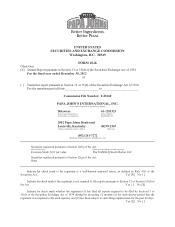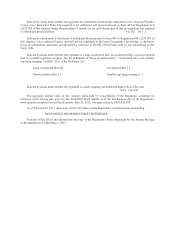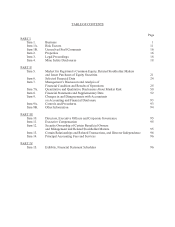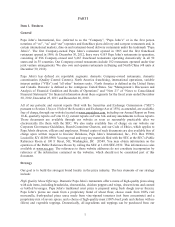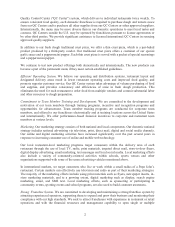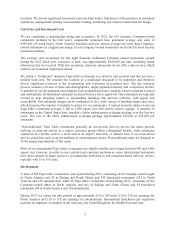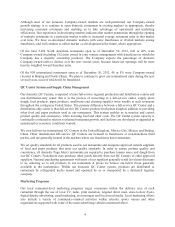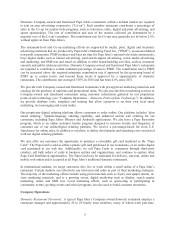Papa Johns 2012 Annual Report Download - page 9
Download and view the complete annual report
Please find page 9 of the 2012 Papa Johns annual report below. You can navigate through the pages in the report by either clicking on the pages listed below, or by using the keyword search tool below to find specific information within the annual report.3
locations. We devote significant resources to provide Papa John’s franchisees with assistance in restaurant
operations, management training, team member training, marketing, site selection and restaurant design.
Unit Sales and Investment Costs
We are committed to maintaining strong unit economics. In 2012, the 615 domestic Company-owned
restaurants included in the full year’s comparable restaurant base generated average unit sales of
$953,000 (53-week basis). North America franchise sales per unit on average are lower than Company-
owned restaurants as a higher percentage of our Company-owned restaurants are located in more heavily
penetrated markets.
The average cash investment for the eight domestic traditional Company-owned restaurants opened
during the 2012 fiscal year, exclusive of land, was approximately $240,000 per unit, excluding tenant
allowances that we received. With few exceptions, domestic restaurants do not offer a dine-in area, which
reduces our restaurant capital investment.
We define a “traditional” domestic Papa John’s restaurant as a delivery and carryout unit that services a
defined trade area. We consider the location of a traditional restaurant to be important and therefore
devote significant resources to the investigation and evaluation of potential sites. The site selection
process includes a review of trade area demographics, target population density and competitive factors.
A member of our development team inspects each potential domestic Company-owned restaurant location
and substantially all franchised restaurant locations before a site is approved. Our restaurants are typically
located in strip shopping centers or freestanding buildings that provide visibility, curb appeal and
accessibility. Our restaurant design can be configured to fit a wide variety of building shapes and sizes,
which increases the number of suitable locations for our restaurants. A typical domestic inline or end cap
Papa John’s restaurant averages 1,100 to 1,500 square feet with visible exterior signage. A majority of
restaurants in the United States have installed a lobby enhancement re-design package over the last two
years. The cost of the lobby enhancement re-design package approximated $10,000 to $15,000 per
restaurant.
“Non-traditional” Papa John’s restaurants generally do not provide delivery service but rather provide
walk-up or carry-out service to a captive customer group within a designated facility, with continuous
operations in a facility such as a food court at an airport, university or military base or an event-driven
service at facilities such as sports stadiums or entertainment venues. Non-traditional units are designed to
fit the unique requirements of the venue.
Most of our international Papa John’s restaurants are slightly smaller and average between 900 and 1,400
square feet; however, in order to meet certain local customer preferences, some international restaurants
have been opened in larger spaces to accommodate both dine-in and restaurant-based delivery service,
typically with 35 to 100 seats.
Development
A total of 368 Papa John’s restaurants were opened during 2012, consisting of 28 Company-owned (eight
in North America and 20 in Beijing and North China) and 340 franchised restaurants (182 in North
America and 158 international), while 88 Papa John’s restaurants closed during 2012, consisting of five
Company-owned (three in North America and two in Beijing and North China) and 83 franchised
restaurants (44 in North America and 39 international).
During 2013, we expect net unit growth of approximately 230 to 260 units (110 to 125 net openings for
North America and 120 to 135 net openings for international). International franchised unit expansion
includes an emphasis on markets in the Americas, the United Kingdom, the Middle East and Asia.

